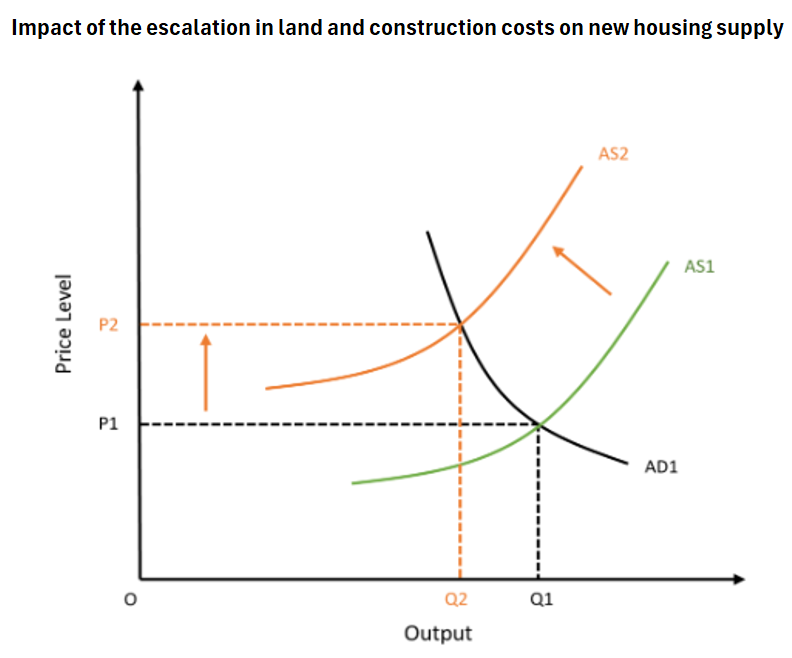Exorbitant land costs are the fundamental driver behind Australia’s expensive housing.
During 2023-24, the residential land values that underpin the housing market grew by 8.8%, reaching a valuation of $7.7 trillion.
Over the 35 years to 2023–24, residential land values skyrocketed from 1.1 to 2.9 times Australia’s GDP.
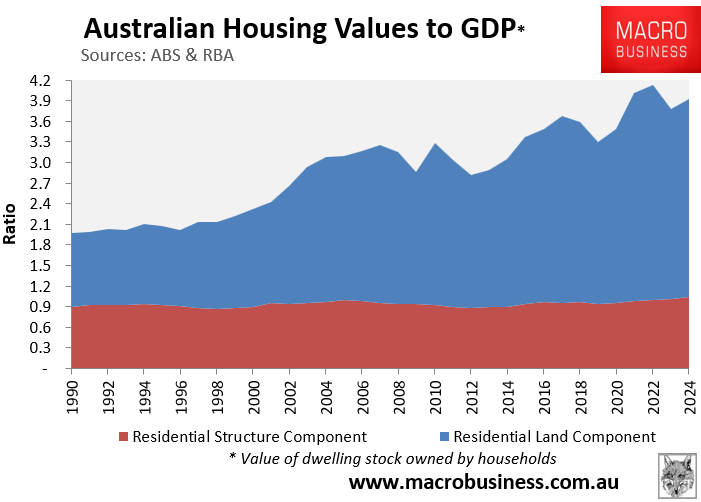
In contrast, aggregate structure values only increased from 0.88 times GDP in 1988–89 to 1.04 times GDP in 2023–24.
New research from Cameron Kusher at Oz Property Insights shows the explosive growth in Australian housing values relative to the economy since the late 1990s.
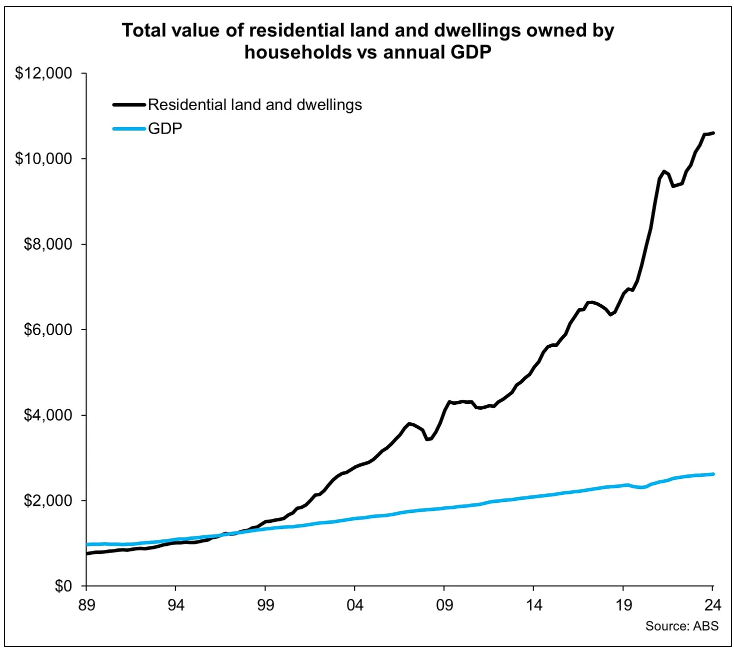
Separate analysis from Oliver in WA showed that Australia’s housing stock was valued at 4.5 times GDP in Q4 2024, significantly higher than other English-speaking nations.
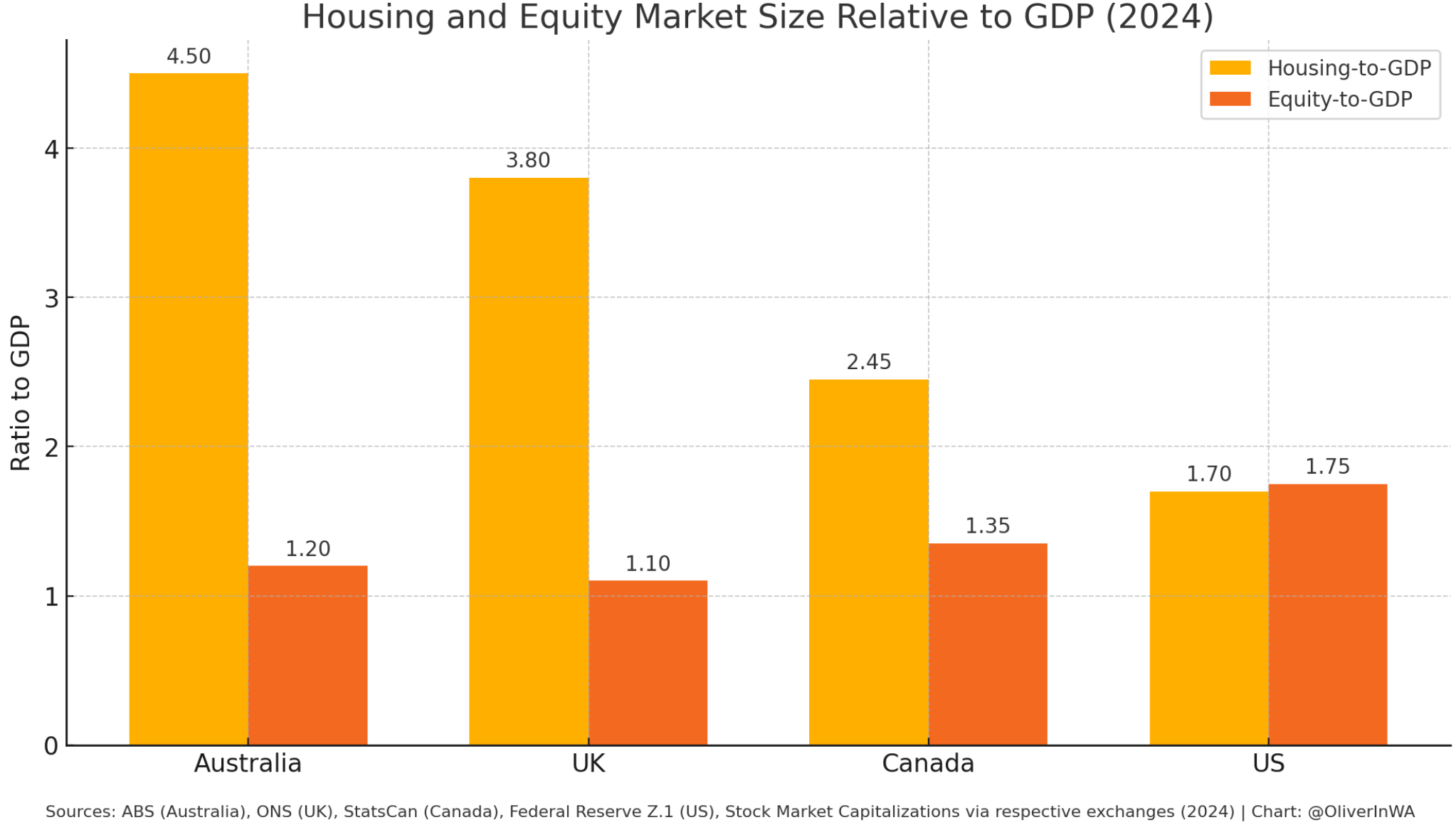
As Kusher shows below, 70.5% of Australia’s total housing value sits in the residential land, with the remaining $3.124 trillion in dwellings accounting for 29.5% of the total value.
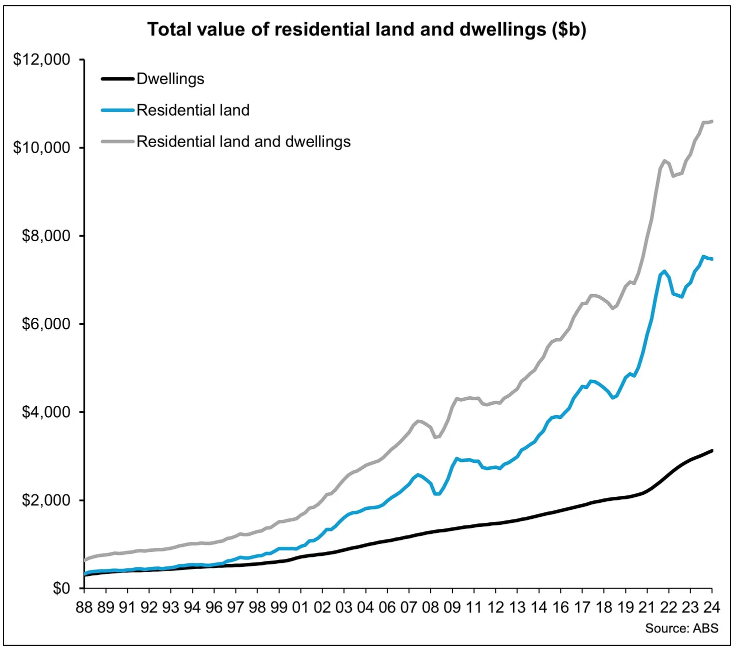
“The annual change in residential land values has been both much more volatile and typically much stronger than the change in dwelling values. Of course this is also due to the fact that dwellings depreciate in value while land typically appreciate”, Kusher notes.
“If you want to make housing cheaper or at the very least increase in value at a slower pace the key is to reduce the inflation in the value of the land”.
“With land cost escalation being the key driver of increasing property values, policymakers that are serious about making housing costs cheaper and more sustainable should be doing everything in their power to reducing the cost of residential land and making that land more abundant”, Kusher wrote.
I will add that the rise in land costs is also evident in the new home market.
The following chart from CoreLogic shows the hyperinflation of median lot prices over the past decade across Australia’s capital cities:
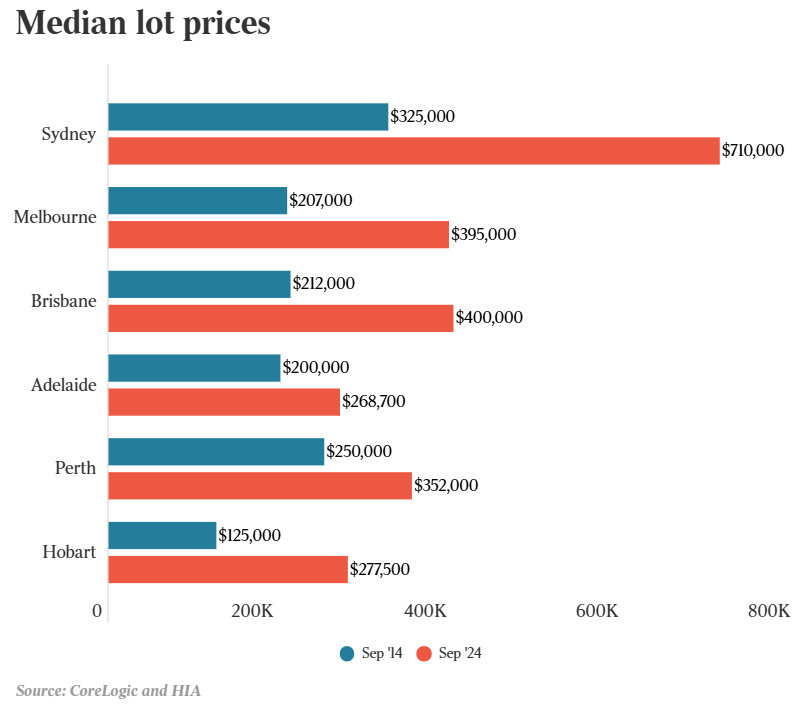
At the same time as median lot prices have surged, UDIA data shows that median lot sizes have shrunk:
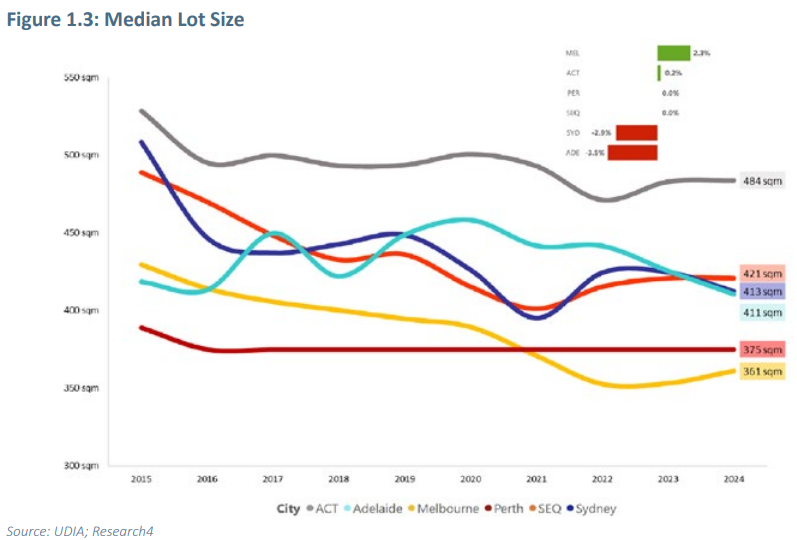
As a result, the median price per square metre has risen more than the rise in median lot price:
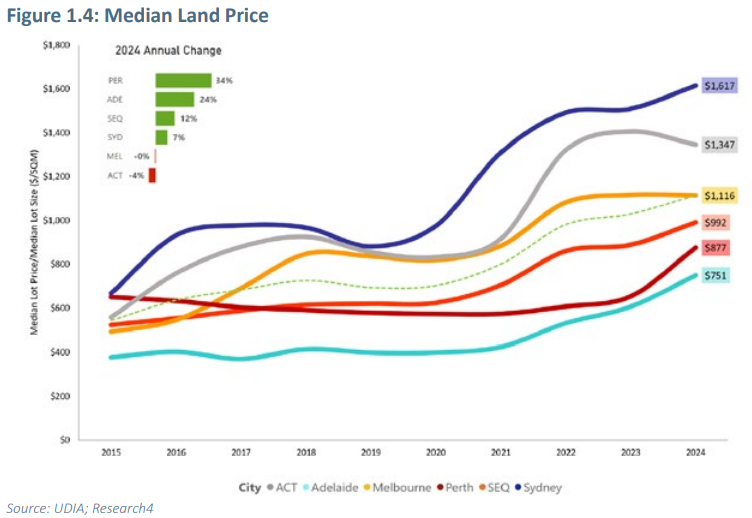
The upshot is that buyers of housing lots are paying more but are receiving less in return.
The rising land cost in Australia is a significant barrier to supplying new homes for the rapidly expanding population.
As illustrated below, this land cost-push inflation has shifted the aggregate supply curve to the left, reducing the capacity for building homes at every price tier.
